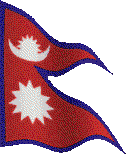In the ancient times, the activities of gods and goddesses were interlinked with human being, and somehow resembled too. Like normal people, they attended jatras, attended cultural functions, accepted offerings, and lived in a house. For every individual activity, human society created separate spaces for god whom they respected the most. House created for god and goddesses were named as dyochhen where dyo means god and chhen means house. Dyochhen existed in the society from earlier period in Kathmandu Valley, and it is thought that the "devakula" represented "dyochhen" and "digvara" represented "pigan"-"peeth".
In Malla period, "Gvara" represented "peeth". This word dyochhen exists till now though there is no longer the practice of constructing them in Nepal. This might be the reason why books that categories Nepalese temples often forget to include "dyochhen." I think the government should look upon these ancient monuments and try to preserve them as it is one of our national treasures.
In Malla period, "Gvara" represented "peeth". This word dyochhen exists till now though there is no longer the practice of constructing them in Nepal. This might be the reason why books that categories Nepalese temples often forget to include "dyochhen." I think the government should look upon these ancient monuments and try to preserve them as it is one of our national treasures.



0 comments:
Bookmarks:













Post a Comment